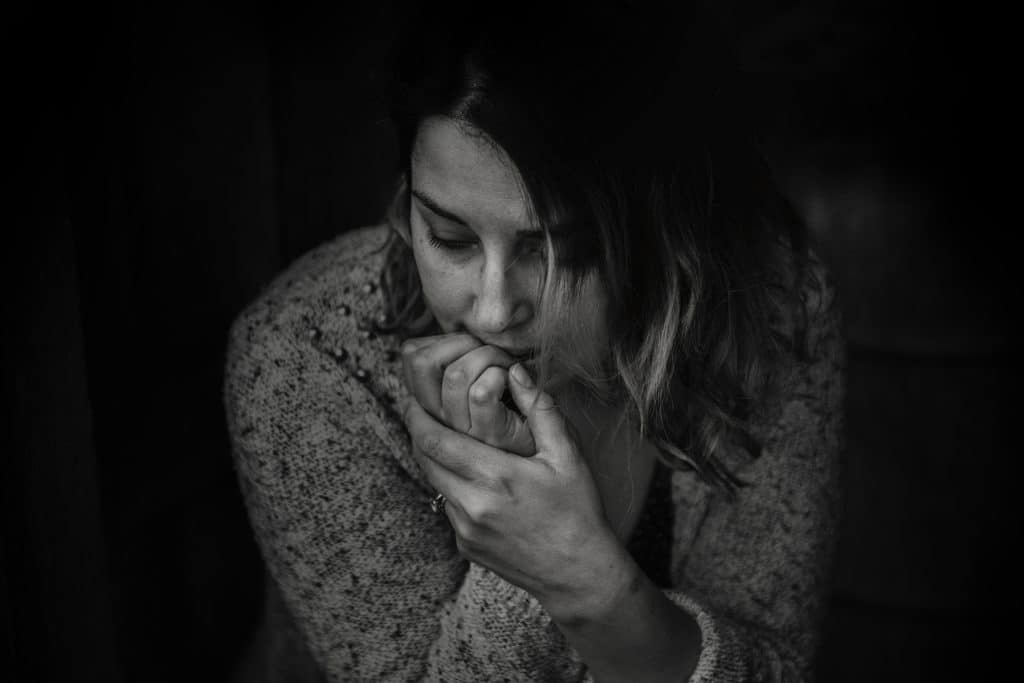- Have you been struggling with your romantic relationships your whole life, stuck in a loop repeating the same mistake over and over again?
- Once in a relationship, do you find yourself consumed with self -doubt, fearing that your partner does not love you and that you are not enough?
- Do you sometimes act out to get your partner’s attention?
- Do you find yourself lashing out at your partner and failing to communicate your needs?
If the answer is Yes, then you might fall under the anxious attachment style.
Before delving deep into the signs of and the road to recovery from your anxious attachment style, a short intro to Attachment Theory and the four main attachment styles is due.
Table of Contents
- What Are Attachment Styles?
- How Attachment Styles Theory Came to Light?
- The Four Main Attachment Styles
- Prevalence of Attachment Styles
- Secure, Avoidant and Anxious Attachment Style: What’s the Difference?
- Signs of Secure Attachment Style
- Signs of Avoidant Attachment Style
- Signs of Anxious Attachment Style
- Signs of Anxious-Avoidant Attachment Style
- Healing from Anxious Attachment Style
- Bottom Line
What Are Attachment Styles?
Attachment styles refer to emotional attachment patterns that were developed at an early stage mainly as a result of our interactions with our caregivers. These early-form attachment patterns become deeply embedded in our brains and are said to play a huge part in our intimate relationships as adults. They are generally thought of as survival and adaptation techniques.
How Attachment Styles Theory Came to Light?
The theory was first presented in the 1960s by British psychoanalyst, John Bowlby, and was later developed by numerous psychiatrists and researchers. Bowlby’s theory found that infants, when left by their caregivers with a stranger, reacted differently, and that those reactions exhibited similar patterns and behaviors that could be categorized into three main groups; secure, anxious and avoidant attachment styles.
The Four Main Attachment Styles
Bowlby’s research found that infants labeled as having a secure attachment style were distressed when separated from their parent but managed to self-soothe and later reacted well when reunited with them. Other infants, namely those with an avoidant attachment style, did not exhibit any signs of distress when their caregiver left, despite their inner anxiety, and later ignored their parent upon their reunion. Whereas, infants with an anxious attachment style showed extreme signs of distress that carried on even after reuniting with their parent. These three attachment styles identified by Bowlby are said to persist through adulthood. A fourth attachment style, anxious avoidant attachment style, was later discovered and is said to share some traits with both the anxious and the avoidant attachment styles.
Prevalence of Attachment Styles
Research estimated that more than 50% have a secure attachment style, 25% are avoidant, 20% have an anxious attachment style, while 3-5 % fall under anxious avoidant style, also known as disorganized style. (Levine and Heller 2012).
Secure, Avoidant and Anxious Attachment Style:
What's The Difference?
The main differences between these three attachment styles, according to Levine and Heller in Attached: The New Science of Adult Attachment and How It Can Help You Find and Keep Love (2012), are seen in:
- How individuals view relationships & sex
- What they expect from intimate relationships
- How they communicate
- How they manage and resolve conflict
Signs of Secure Attachment Style
- Value relationships.
- Express their needs more easily, able to negotiate and resolve conflict.
- Comfortable in their relationships. Able to trust and rely on others.
- Experience anxiety like everyone else, but do not fear abandonment.
- Less likely to question themselves in a relationship.
- Less likely to act out in a relationship.
- Think highly of themselves and others. Believe that other people are honest and trustworthy.
- More likely to have long-term acquaintances and relations.
Signs of Avoidant Attachment Style
- Do not value relationships.
- Characterized by their fear of commitment.
- Think highly of themselves and less of others. Could be suspicious and distrusting of others.
- Deploy escapism tactics (e.g. drowning themselves in work, working out too much, binge eating…)
- Enjoy their independence.
- Have difficulty communicating their feelings and needs.
- Fight or flight tactics in handling conflict (Withdraw or flip the table on their partner)
- Prefer casual relationships to long-term relationships.
- Difficulty maintaining have long term relations with friends, family and ex partners. (RED FLAG!)
Signs of Anxious Attachment Style
- Self-sacrifice & self- abandonment that stems from their need to connect with others.
- Lower self-esteem.
- Could come off as dependent or needy. Need more reassurance than those with a secure attachment style.
- Could come off as controlling.
- Deploy escapism tactics, like those with an avoidant attachment style.
- Question oneself whenever they sense a change in their relationship (e.g. Did I do something wrong? What can I do to fix it?)
- Alert to others’ reactions and behaviors due to their fear of abandonment (e.g. Hypervigilant to their partners’ mood changes/ Ability to read the room)
- More likely to act out for attention (e.g. Try to make their partner jealous)
Signs of Anxious-Avoidant Attachment Style
- Also known as “Fearful” or “Disorganized attachment style”
- Fear intimacy, rejection and abandonment.
- Have lower self esteem
- Distrust others.
- Less likely to express their feelings with loved ones.
- More likely to suffer from depression and other emotional problems.
Healing From Anxious Attachment Style
While having an anxious attachment style can be a rollercoaster of emotions at times, the good news is, IT CAN BE FIXED! According to Levine and Heller (2012), healing from an attachment style takes 4 years and one of four people are able to move pass their attachment style.
In my podcast interview with Tracy Crossley, author of Overcoming Insecure Attachment (2021), she says that the #1 step towards healing from your attachment style is connecting with your authentic self.
To Heal from An Anxious Attachment Style
& Find Your Authentic Secure Self, You Need To:
1. Give it Time
Since our attachment styles are deeply embedded in our nervous systems, know this: this process will take time, and it will not be easy, but you’ll eventually get there if you put your head and heart into it.
2. Counteract Your Narrative
Connect with reality. Think about the narrative that you’re telling yourself and counteract it with the hard facts (e.g. Do you tell yourself that you’re not good enough? Do you tell yourself that you must’ve done something wrong? Do you tell yourself that you’ll never find love?). Know that this “narrative” stems from your anxiety and that it has nothing to do with your “reality”.
3. Take Responsibility for Your Choices
Take responsibility for your romantic choices. Dating bad-for-you men is a choice, while being attracted to this type of men is a red flag that could indicate your unconscious attempt to fix an old relationship with a loved one. Dig deep and think about your “bad” relationship choices and if they remind you of an old relationship with a caregiver.
4. Differentiate between Surface and Deep Feelings
The difference between our surface and deep feelings is the difference between the “What” and the “Why”. To elaborate, the answer to “What am I feeling right now?” is our surface feelings, whereas the answer to “Why am I feeling the way I am? or Why am I reacting to this situation this particular way? is our deep feelings. Try and access your true or deep feelings, whenever you find yourself in a triggering situation that’s causing your regression.
5. Build A Strong Support System
Anxiety in relationships usually stems from having lower self-esteem and to start loving, accepting and believing in yourself, you have to surround yourself with people who truly love and support you during this journey. A strong support system also means letting go of bad-for-you relationships. So, practice setting boundaries with those around you and practice saying no to bad relations, including friendships, that have proved to bring you down over and over again.
6. Practice Self-Compassion
Whenever you’re being too hard on yourself, pretend that these words are being said to your loved one and defend yourself the way you would defend them. Forgive yourself for all the times that you came off as needy, clingy or controlling. Forgive yourself for all the bad relationship choices you’ve made (We’ve all made those). Know that your attachment style is an adaptation technique, meaning that it is a direct result of your upbringing and experience. Remember that, back then, you were merely acting based on the experience you had.
7. Unwind Your Nervous System
According to applied Neurology Practitioner, Elisabeth kristof, training our nervous systems by engaging in positive stimulus (yoga, listening to music, dancing, doing some simple physical exercise, etc.) for 3-5 minutes relieves stress and helps us assess situations better and react accordingly, rather than react from a place of fear and anxiety. Make time for yourself every day and unwind from all your stress, anxiety and negativity.
8. Seek Professional Help
Dealing with a deeply embedded pattern in our brain, one that has shaped our reactions and behaviors for the majority of our lives, dictates the help of professionals, both a therapist and a relationship coach. While working with a therapist can help you access buried memories and identify the root causes behind your anxiety, it will not provide you with the dating strategies and tools you need to find the right guy for you. This is where a relationship coach comes in to walk you through the process and provide you with the support you need along the way. Read more on Our Signature Programs & watch what our clients had to say about us.
Bottom Line
Attachment theory provides a great deal of insights to those who are continuously struggling in their romantic relationships. Recognizing your attachment style is the first step towards breaking your cycle of bad relationships, healing, and finding the right partner for you. Though the process is lengthy and can be daunting at times, with the right support system, it is 100% achievable and is definitely worth all the efforts.




